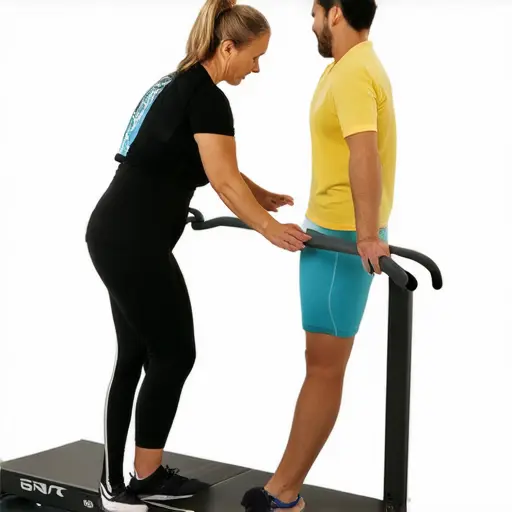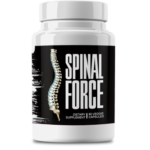This Village-Made Chinese Pain Reliever Eliminates Back And Joint Pain!
Patellofemoral Syndrome Treatment: Exercises That Work

Patellofemoral Syndrome Treatment: Exercises That Actually Help
If your knees have been giving you trouble—especially that nagging pain around the kneecap—you might be dealing with patellofemoral syndrome (PFS), or what many call "runner's knee." Whether you're an athlete or just someone who enjoys staying active, this condition can turn everyday movements like climbing stairs or even sitting too long into a real challenge. But here's the good news: with the right approach, you can ease the pain, get back to moving comfortably, and keep future flare-ups at bay.
In this guide, we'll walk through the most effective exercises and treatments for PFS—the kind physical therapists actually recommend. Whether you're recovering from an injury or just want to bulletproof your knees, these strategies will help you stay active without the ache.
Getting to Know Patellofemoral Syndrome
What Exactly Is PFS?
PFS happens when the cartilage under your kneecap gets irritated, usually because the kneecap isn't tracking quite right or you've been overdoing it. That's why you feel that telltale pain at the front of your knee, especially when you're doing things like squatting, running downhill, or taking the stairs.
What Causes It (And How You Know You Have It)
Several things can set the stage for PFS:
- Muscle imbalances (like weak quads or tight hamstrings)
- Going too hard with high-impact sports
- Flat feet or wonky movement patterns
- Ramping up your activity level too quickly
And here's how it usually shows up:
- A dull ache around your kneecap that just won't quit
- Those unsettling popping or grinding sensations
- Pain that flares up after you've been sitting awhile (we call this "theater sign")
Why You Shouldn't Ignore It
Here's the thing—if you brush off PFS symptoms, you could end up with worse cartilage damage or chronic pain down the road. But catch it early with proper treatment, and you can get your knees back on track before things get serious.
Your Non-Surgical Treatment Playbook
The Trusty RICE Method
When your knee's really acting up, fall back on this classic:
- Rest: Give it a break for 2-3 days (yes, that means skipping your usual workout)
- Ice: 15-20 minutes every few hours (a bag of frozen peas works great)
- Compression: A simple knee sleeve can work wonders
- Elevation: Prop it up when you're chilling on the couch
When to Reach for Pain Relievers
NSAIDs like ibuprofen can take the edge off when you really need it, but remember—they're just a temporary fix. The real magic happens with the exercises we'll get to in a minute.
Why Physical Therapy Is a Game-Changer
A good PT can help you tackle PFS from all angles with:
- Customized strengthening exercises
- Tips to fix your walking or running form
- Hands-on techniques to ease pain and improve movement
The Best Exercises for PFS Relief
Building Stronger Quads
Stronger thigh muscles = happier kneecaps. Try these:
- Straight Leg Raises: Lie on your back, keep one leg straight, and lift it about a foot off the ground. Hold for 5 seconds—feel that burn?—then lower slowly.
- Mini Squats: Feet shoulder-width apart, bend just 30 degrees (no deeper!), then stand back up. Think "sitting in a tiny chair."
Don't Forget Your Hips and Glutes
Weak hips can throw your whole knee alignment off. Mix in:
- Clamshells (like opening a book with your legs)
- Bridges (lift those hips like you're showing off at the beach)
Stretches That Actually Help
Tight muscles pull your kneecap out of whack. Focus on:
- Gentle hamstring stretches
- Foam rolling your IT band (yes, it'll hurt a bit)
- Calf stretches against a wall
Doing Your Exercises Right
Form Matters More Than You Think
A few pro tips:
- Keep your knees in line with your toes during any bends
- Don't lock your knees straight—keep a tiny bend
- Brace your core like someone's about to tickle you
How Much Should You Actually Do?
For most of these:
- 2-3 sets of 10-15 reps
- Daily is ideal (unless your knee's really protesting)
Extra Tricks to Speed Up Recovery
Braces and Tape: Help or Hype?
A patellar brace or some kinesiology tape can give temporary relief during activities by keeping your kneecap in line—just don't rely on them forever.
Stay Active Without the Ouch
Try these knee-friendly cardio options:
- Swimming (your knees will thank you)
- Cycling (just make sure your seat's high enough)
- The elliptical (the forgotten hero of cardio machines)
Small Changes That Make a Big Difference
Shoes Matter More Than You'd Think
Look for:
- Good arch support
- Plenty of cushion
- And replace them before they're completely dead—your knees can tell!
Wrapping Up
Beating patellofemoral syndrome takes a mix of smart exercises, some temporary activity tweaks, and a healthy dose of patience. Stick with these strategies, and most people see real improvement in 6-8 weeks. Just remember—progress slowly, and if the pain sticks around, don't hesitate to see a physical therapist.
Have you dealt with PFS before? What worked (or didn't work) for you? Drop your wisdom in the comments—your experience could help someone else!








